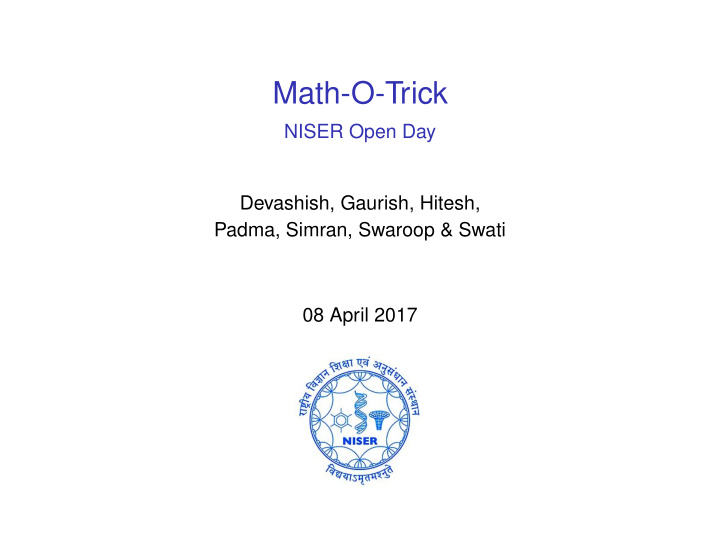



Math-O-Trick NISER Open Day Devashish, Gaurish, Hitesh, Padma, Simran, Swaroop & Swati 08 April 2017
Let x be the position of the card, from the top in a face down pack of n cards, that is left after performing the said procedure. Then x = 2 n − 2 ⌊ log 2 n ⌋ + 1 + 1 where ⌊ m ⌋ denotes the largest integer not greater than m .
Permutation is a rearrangement of objects from a given collection and every permutation can be reversed in a unique way. The collection here consists of 13 cards of spades and the procedure is the reverse of a permutation.
If 142857 is multiplied by any integer from 2 through 6 , the result will contain the same digits as in 142857 , in the same cyclic order.
There is always a way to arrange a pack of n ( n + 1 ) cards, divided into pairs and placed in n rows of n + 1 cards, so that only row (or column) positions of a given pair of cards determines the exact position of each card of that pair.
Given a deck of n cards, deal some cards into a face-down pile on the table, so that their order gets reversed. If we riffle-shuffle the two piles, then for each k , the top k cards are consecutive in 1 , 2 , 3 ,..., n . This is known as Gilbreath Principle .
♠ Does shuffling always destroys the order? (NO!) ♥ Is 142857 the only number with such property? (NO!) ♣ We saw that cards are not only for gamblers but also for mathematicians. Can we do serious research using the mathematical principles stated in these slides? (YES!) ♦ If magic is something that we can’t comprehend but can still appreciate, just like these card tricks, then isn’t mathematics itself magical? If you wish to know more, feel free to contact us at mathematix@niser.ac.in .
Recommend
More recommend